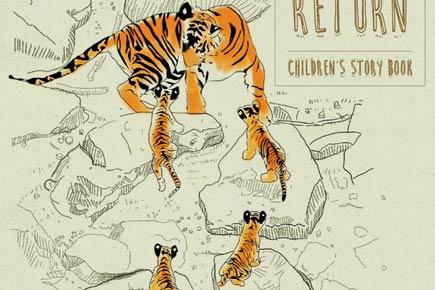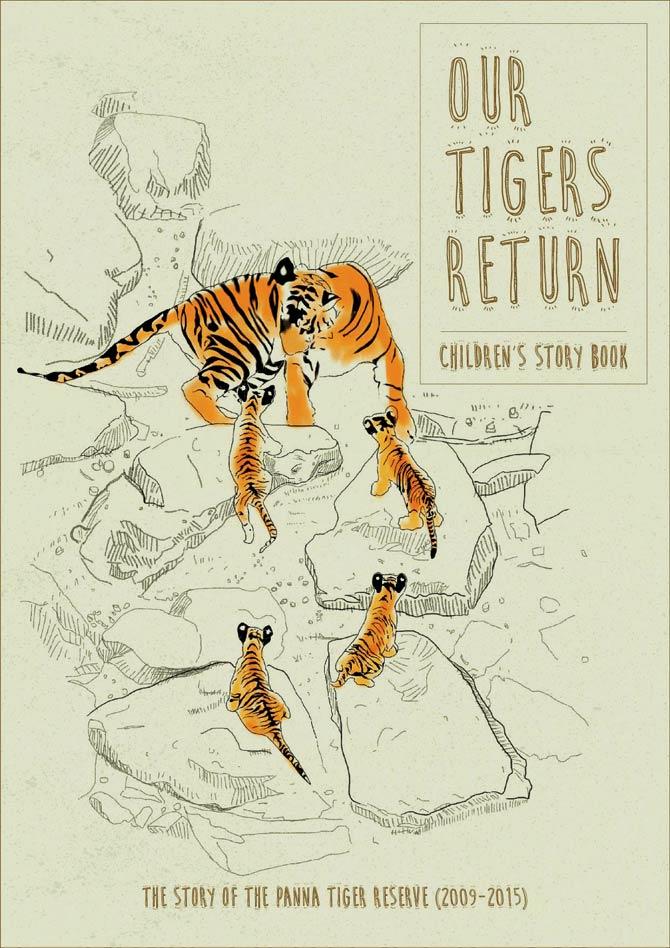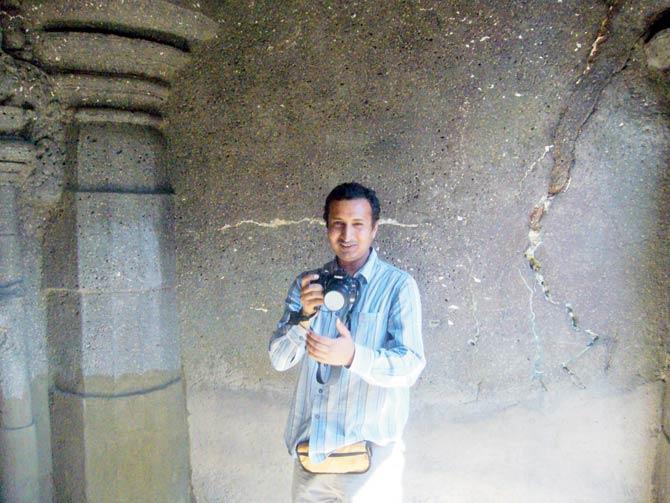Peeyush Sekhsaria's new book on the Panna Tiger Reserve retraces the story of how the animal was saved from extinction

Even as moviegoers make a dash to watch Walt Disney's live-animation flick The Jungle Book — the tale of young Mowgli's survival in the wilderness — many a story of animals of the wild, living under the shadows of foreseeable threat in India, are going unnoticed.
ADVERTISEMENT

Cover of the book
Our Tigers Return: The Story of the Panna Tiger Reserve (2009-2015), a children's book by Peeyush Sekhsaria and Rangaiah Sreenivasa Murthy, hopes to make one such story known. The book, which also comprises over 100 illustrations put together by Anirudha Ghosh, will be introduced to children at the Lit Bug Fest in Pune on April 30. The story of Panna Tiger Reserve, which is located in Madhya Pradesh, is not an ordinary one.

Author Peeyush Sekhsaria
An abandoned patch of green cover — that was the tragic fate of the reserve way back in 2009. Five years later, things dramatically changed.
"From zero tigers to over 25 in 2014, this was an astounding achievement unparalleled in the world," says Delhi-based Sekhsaria, who is an architect by profession, and a wildlife enthusiast.
Forty one-year-old Sekhsaria recalls how moved he was with Panna's success story. That's when the idea of doing a book on how the tigers at the reserve were saved from extinction, first came about.
The book, through the protagonist Murthy (the director of the reserve), recounts how tigers were reintroduced into Panna and the endless efforts of the staff to ensure that they were raised safely within this deteriorating habitat. Nothing like telling it to children, says Sekhsaria.
"We need to convey these stories (to children) for it is through these stories that a fascination, love, interest, concern for our natural surroundings is imbibed in them. Through children, I often find that even adults rediscover their love for nature," he says.
The author also feels that there is an urgent need to highlight issues related to the environment and endangered wildlife. Stories work as the most powerful medium, he says. "Nothing is more important in the world today. In nature there is no dearth of fascinating, inspiring, entertaining stories... stories of valour and courage, of people, of colour, of beauty," he says.
However, like many mistakenly assume, writing a book for children, doesn't imply dumbing down this information. It is an art in itself, explains Sekhsaria. "While writing for children I try always to think of what is it that will catch a child's curiosity and interest...there has to be a sense of fun. Serious issues need also to be taken up, but with honesty. If you don't know something, then it is best to say that we don't. Children are very creative and inherently full of wonder, they are not sceptics or pessimistic, when they see something they want to do, touch feel play. I try and drive my writing with these motivations, I try and visualise a lot and use illustrations as expansively as possible," he says.
As of now, the writing is trying to ensure that maximum number of children in the Panna landscape, read this book. The book has also been translated in Hindi. "I want them to enjoy this magnificent story because it is their story and their future," he says.
 Subscribe today by clicking the link and stay updated with the latest news!" Click here!
Subscribe today by clicking the link and stay updated with the latest news!" Click here!






